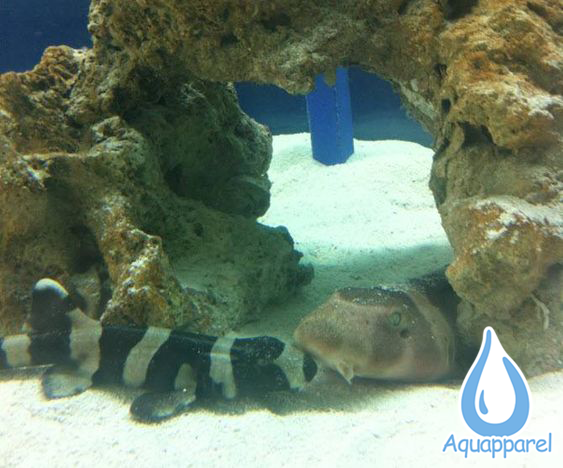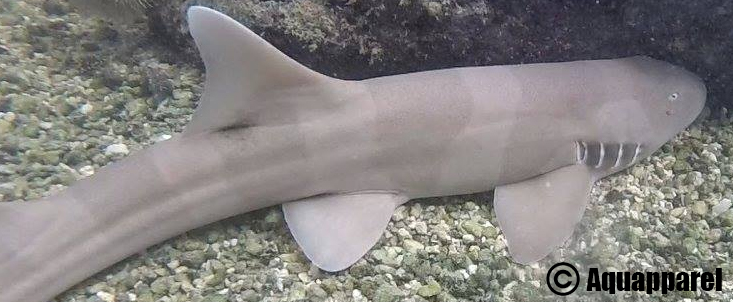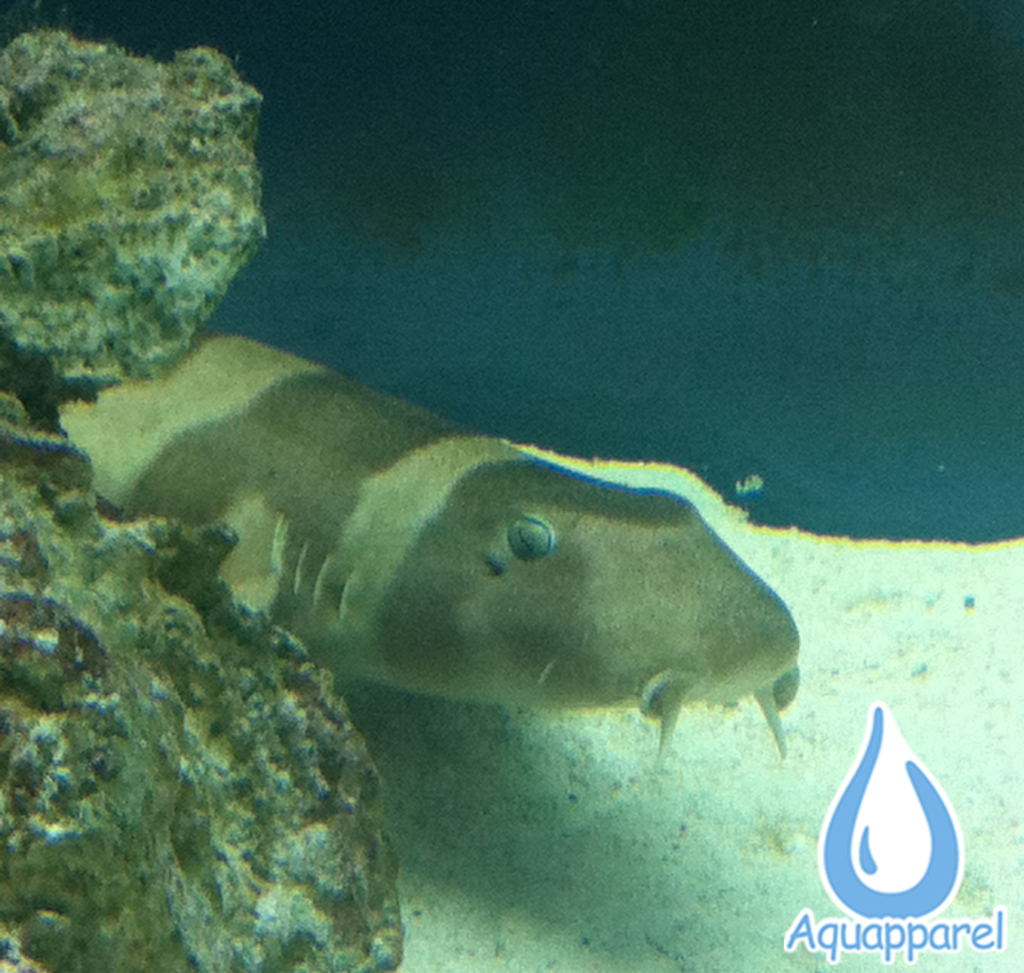The most commonly available shark in the aquarium industry is the Brown Banded Bamboo shark. They look like this as juveniles (pictured on the left).

Over time their bands fade and they look like this as adults (pictured on the right).
This shark was rescued twice:

The person who we got him from rescued him from someone who could no longer keep him. He kept him for about a year or so and cared very well for him. My good friend Matt Heyde was then called in to take him and his buddy this juvenile Nurse Shark to a larger home at a marine mammal facility.
The Brown Banded Bamboo Shark belongs to the family Hemiscylliidae. Here are some interesting facts about the Brown Banded Bamboo Shark:
- They are found in depths of 279 feet in the Indo-West Pacific from Japan to northern Australia
- The common name of this shark comes from the brown bands of color that they have when they are juveniles. These bands start off as black and white, then fade to brown and tan and eventually the shark is a copper/brown color. The also have black and brown spots that look like freckles when they are young.
- In the wild, the live near coral reefs and can be found in tide pools as well.
- These sharks are very intelligent and I have personally had success training them, check this video clip out
- They are oviparous which means that they lay eggs. When you see shark eggs in an aquarium store they are mostly from this species. This is what they look like.
- Normally you cannot see through the egg case but the staff at this store removed the outer material leaving the egg case wall intact so that you can easily see the baby shark developing inside.
- It takes approximately 77 to 123 days for the shark pup to fully develop and hatch
- You should never remove the pup from the egg case prematurely. This puts them at risk for infection and a variety of other complications. If the shark is fully developed, trying to get out of the egg case and it is having trouble you can then carefully assist it.
From my experience these sharks are mostly pretty docile towards other species of sharks for the most part but I have seen a few that we rescued that were a little bit aggressive. They are very intelligent and although they are the easiest to find for the home aquarium, they get the largest at a maximum length of about 3 and a half feet.

Their current status in the wild according to the IUCN Red list as of March of 2015 is listed as of Near Threatened. Although these sharks are commonly bred in captivity, there are still a lot that are taken from the wild for various reasons including the aquarium trade. There is also not currently an action recovery plan in place to help re-populate these species in the wild. If you are watching this and you breed this species please get in touch with me so that we can see what can be done to help the wild populations recover.
Let me know in the comments below which public aquariums have this species on display so that if anyone who is watching this wants to see one in person they can.
This shark is commonly kept as a pet. But before you buy one for your home aquarium watch the video below.
If you would like to learn even more, consider enrolling in my online course here: Aquarium Sharks For Beginners
